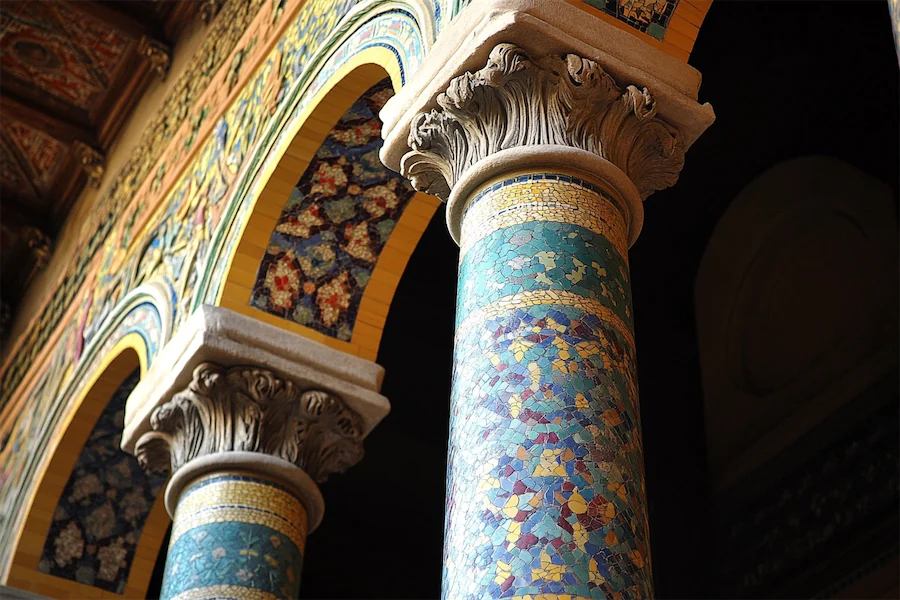Byzantine Revival architecture, also known as Neo-Byzantine architecture, emerged in the 19th century as a movement that sought to revive and reinterpret the architectural elements of the Byzantine Empire. A distinctive feature of this style is the use of columns that blend classical forms with Byzantine aesthetics, contributing to the unique character of Byzantine Revival structures.
Introduction to Byzantine Revival Columns
In Byzantine Revival architecture, columns serve both structural and decorative purposes. They are often characterized by their elaborate capitals, intricate carvings, and the use of materials that reflect the opulence of the original Byzantine style. These columns are integral in supporting arches and domes, which are prominent features in Byzantine Revival buildings.
History and Origins of Byzantine Revival Columns
The Byzantine Revival movement began in the mid-19th century, inspired by the rich architectural heritage of the Byzantine Empire, which thrived from the 4th to the 15th centuries. Architects sought to revive elements such as domes, mosaics, and ornate columns, integrating them into modern constructions to evoke the grandeur of Byzantine architecture. This revival was part of a broader trend of historicist architectural styles that looked to the past for inspiration.
Key Features of Byzantine Revival Columns
Byzantine Revival columns exhibit several distinctive characteristics:
- Capitals: The capitals of these columns are often intricately carved with motifs such as acanthus leaves, palmettes, and other vegetal patterns, reflecting the decorative richness of Byzantine art.
- Materials: Materials like marble and stone are commonly used, sometimes adorned with inlays or mosaics, to emulate the luxurious finishes of historical Byzantine columns.
- Forms: While maintaining classical proportions, Byzantine Revival columns may feature unique adaptations, such as the use of basket capitals or the incorporation of religious iconography, distinguishing them from other revival styles.
Applications of Byzantine Revival Columns
In Byzantine Revival architecture, columns are utilized in various ways:
- Structural Support: They support arches and domes, essential elements in creating the expansive and open interiors characteristic of the style.
- Decorative Elements: Columns often serve as focal points in both exteriors and interiors, their ornate designs contributing to the overall aesthetic and spiritual ambiance of the building.
Considerations When Choosing Byzantine Revival Columns
When designing or restoring structures in the Byzantine Revival style, several factors should be considered:
- Authenticity: Ensuring that the column designs are faithful to historical precedents, both in form and ornamentation, to maintain architectural integrity.
- Craftsmanship: The intricate details require skilled artisans to achieve the desired level of detail and quality, reflecting the craftsmanship of the original Byzantine era.
- Material Selection: Choosing appropriate materials that not only replicate the appearance of historical columns but also meet modern standards for durability and maintenance.
Conclusion
Byzantine Revival columns are a testament to the enduring influence of Byzantine architecture, embodying a blend of historical reverence and artistic expression. Their intricate designs and structural roles continue to inspire and captivate, reflecting the timeless appeal of the Byzantine aesthetic.
